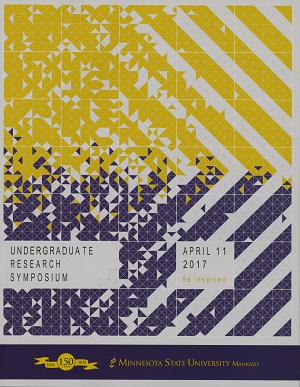Martha Graham: A Structural Functionalist
Location
CSU 201
Start Date
11-4-2017 11:05 AM
End Date
11-4-2017 12:05 PM
Student's Major
Theatre and Dance
Student's College
Arts and Humanities
Mentor's Name
Julie Kerr-Berry
Mentor's Department
Theatre and Dance
Mentor's College
Arts and Humanities
Description
The purpose of this research is to analyze the choreographic work of Martha Graham based on the social theory of structural functionalism. Such research contributes to the under recognized field of dance scholarship. Application of this theory is possible to this art form, because dance is a reflection of the cultural values from the society within which it develops. Structural functionalism is a sociological theory that provides reasoning behind all social interactions and structures. It was first developed by Talcott Parsons. Parsons broke structural functionalism down into four functional imperatives all social structures must have to exist: adaptation, goal attainment, integration, and latency. Martha Graham's early choreographic works are examples of these imperatives. Using these imperatives, movement, costumes, set design, and the narratives of four of Graham's early choreographic works will be viewed and analyzed to provide evidence that she was a structural functionalist. The works are: Heretic, Primitive Mysteries, Lamentation, and Frontier. Results of this research reveal the sociological dimensions of Graham's work, which has implications to fields of dance and sociological research.
Martha Graham: A Structural Functionalist
CSU 201
The purpose of this research is to analyze the choreographic work of Martha Graham based on the social theory of structural functionalism. Such research contributes to the under recognized field of dance scholarship. Application of this theory is possible to this art form, because dance is a reflection of the cultural values from the society within which it develops. Structural functionalism is a sociological theory that provides reasoning behind all social interactions and structures. It was first developed by Talcott Parsons. Parsons broke structural functionalism down into four functional imperatives all social structures must have to exist: adaptation, goal attainment, integration, and latency. Martha Graham's early choreographic works are examples of these imperatives. Using these imperatives, movement, costumes, set design, and the narratives of four of Graham's early choreographic works will be viewed and analyzed to provide evidence that she was a structural functionalist. The works are: Heretic, Primitive Mysteries, Lamentation, and Frontier. Results of this research reveal the sociological dimensions of Graham's work, which has implications to fields of dance and sociological research.
Recommended Citation
Koshak, Bethany. "Martha Graham: A Structural Functionalist." Undergraduate Research Symposium, Mankato, MN, April 11, 2017.
https://cornerstone.lib.mnsu.edu/urs/2017/oral-session-05/2



